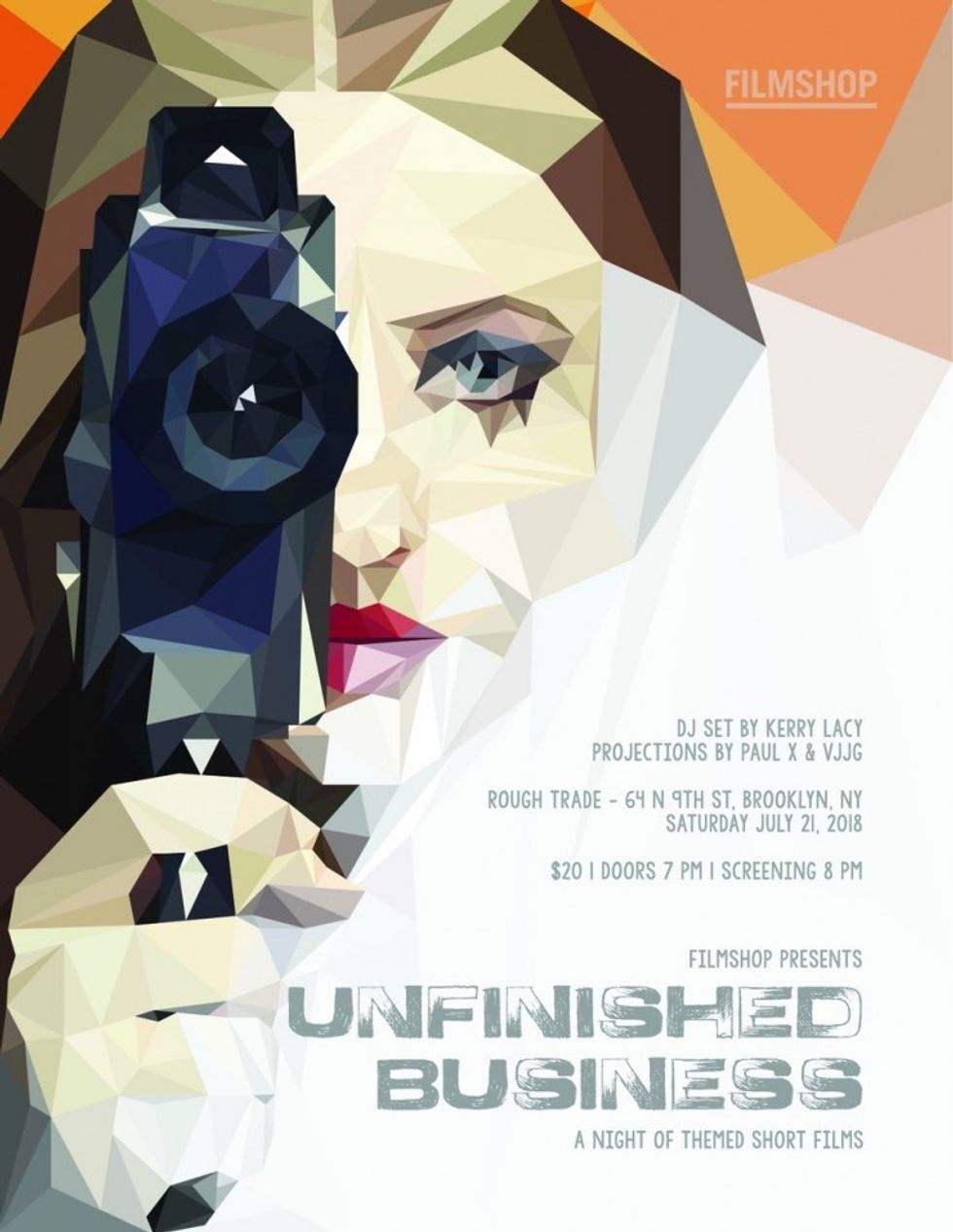10 Tips for Pulling Together Your Shorts on a Tight Timeframe
These filmmakers know how to get a film made quickly.

A collective of filmmakers was presented with a challenge: make a film around a particular topic to present at an upcoming showcase. While they had a number of months to pull projects together—it was no 24-hour film festival—a looming deadline drove these folks towards a final cut. Filmshop, based in Brooklyn, Manhattan, and New Orleans, is a collective of over 100 independent filmmakers who meet weekly by season to workshop projects, offer constructive critiques, and incubate new ideas. Some of these creators have been developing projects for years, so having a limited time frame is a motivation to just make something. While the igniting topic for this season's showcase—"Unfinished Business"—was known months out, as you can imagine, a number of projects came together rather last minute for the July 21st event.
Below, some of the filmmakers share tips on what they learned around pulling together short projects on a tight time frame. There is no secret sauce for movie-making: you don’t have to shotlist ahead of time, you can aim for super complicated set-ups, of course it is possible to make a film without an Assistant Director—but here are some standbys that these filmmakers who just took a whirl around the block consider best practice:
"The cast was small, the locations were simple, and the crew was lean."
1. Don’t be afraid to ask
“The great thing about the Filmshop is that we're a collective, and we go around the room at the end of each meeting and make an ‘ask,’” says director Theresa Loong, whose film In Bed will screen at the event. “I realized that growing up, I didn't always ask for things."
The end-of-season shorts often pull crew from fellow Filmshop members, as folks are often down to work on each other’s projects as fellow collaborators, outside of pay. Favors are swapped. Friends are supported. Movies are made. But first you have to ask.
2. Keep it simple
Josh Granger has made many Filmshop event films, and his biggest tip is to keep it simple. “Being ambitious is great, but at the end of the day you need to make a short film on a tight timeframe!” he says. “I take big inspiration from those shorts that are extremely stripped down in execution but still pack a narrative punch. Keep it to minimal locations, minimal actors, few takes.” This round, Granger kept his project Untitled Business so simple that he skipped production altogether. He and co-director Rebecca Israel gathered projects from other FS members that had never been finished, and cut them into “a sort of Unfinished Business tone poem. To keep it all poetic, we also left that tone poem film as somewhat unfinished.”
For her short The Cheeseburger, "I picked a subject and wrote a script that I knew would be easily producible on a tight timeline," director Hillary Berkowitz Nussbaum says. "The cast was small, the locations were simple, and the crew was lean."
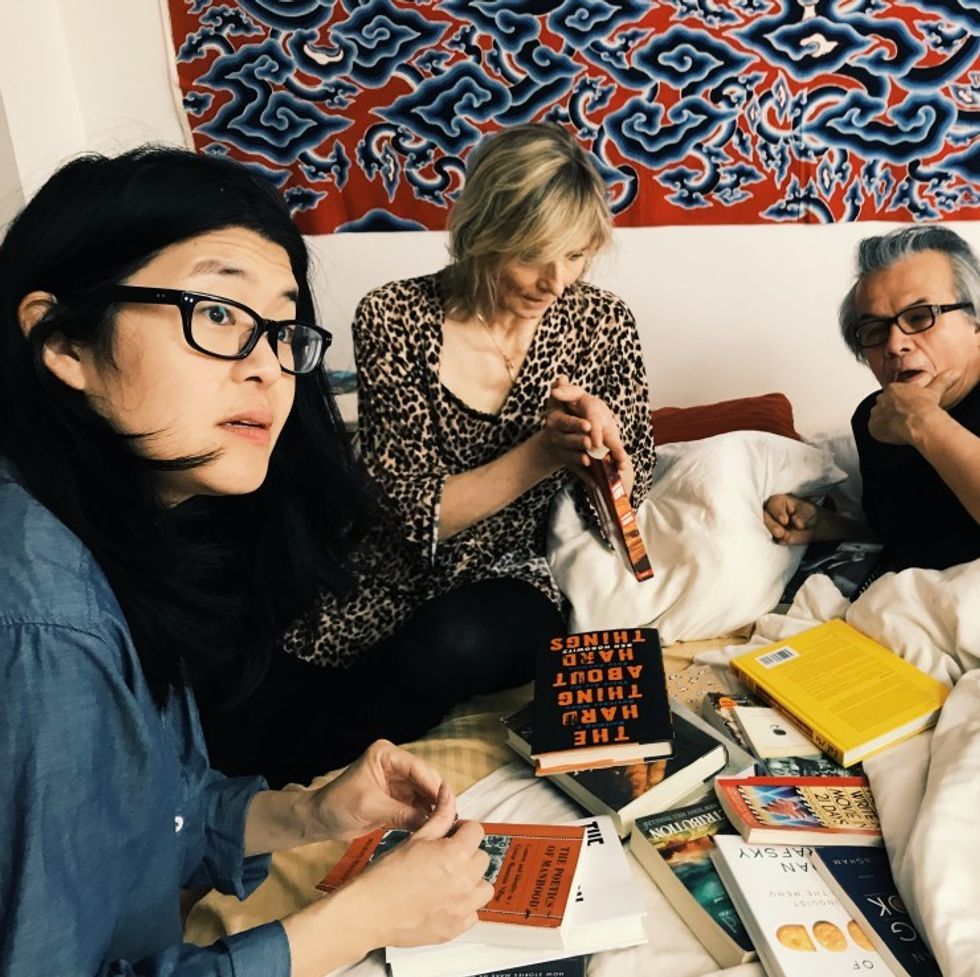
3. Edit that script
It is certainly simpler logistically to edit on paper, than to edit mentally in the midst of all the chaos and time pressure of production. If you edit on the fly, by the time you get to post-production, you’ll be cutting things that cost significant resources and effort to create, as opposed to just hitting the backspace.
“I wrote a script; I pared down the script,” says Loong. “Due to time constraints and—well, some of it wasn't necessary, I pared it down even more. It's hard to let go of scenes. I ended up prioritizing scenes with my cinematographer and giving up a few shots.”
Loong had just over two hours to shoot her film, In Bed, in bed, so shooting extraneous material wasn’t a great option.
“Tight timelines can lead to sacrifice, but the story should never be one.”
“Tight timelines can lead to sacrifice, but the story should never be one,” director Eden Martinez muses. “I refined the Masterpiece script tirelessly, workshopped Masterpiece with Filmshop collaborators, held an informal table read, and brought on a co-writer (Ginny Leise) to ensure the script stayed true to my point of view and clearly communicated the central themes to an audience.”
4. Find a tribe to collaborate with
A reoccurring theme among the filmmakers was choosing the right team. Relish the folks you really click with!
“Your tribe are the collaborators who will fight for your vision,” says Martinez. “Communicate that vision and invite them into the process. I shared the lookbook with the entire team to set the vision for the film.”
Writer/Director Claire Dubs loves the casting process, but with the schedule for her project Art Show, there just wasn’t time to indulge as endlessly in casting as she would have liked. “So I did a different fun thing—I cast friends!” Claire says. “Casting friends saved time in pre-pro but I also think on set. There was such a good vibe from the get-go.”
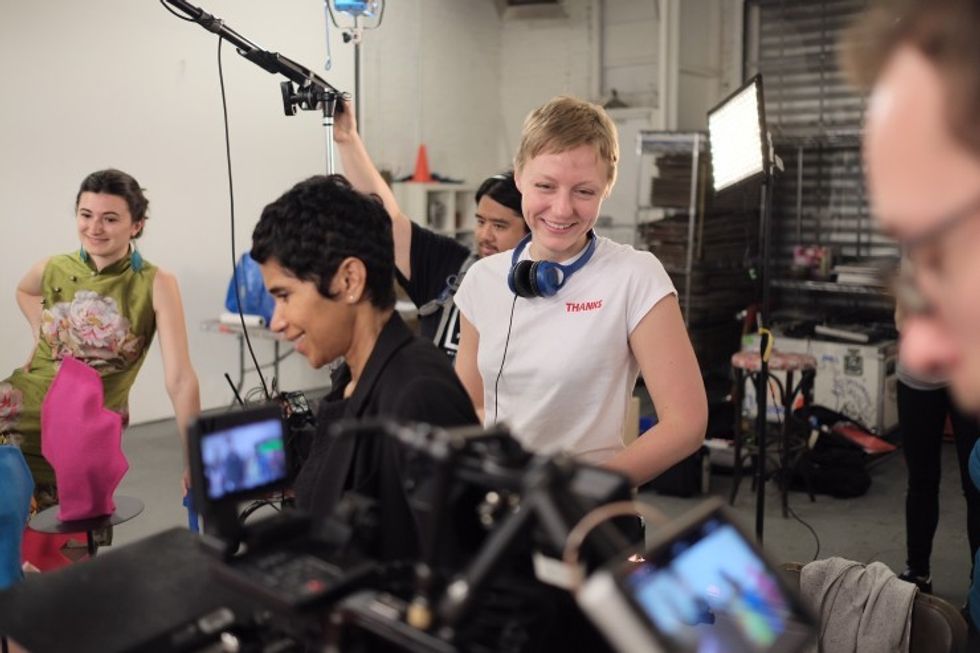
Part of building your team is taking the time to have de-briefs after a shoot. Celebrate what went well. Acknowledge what didn’t go as you imagined. If you want to improve your collaborations and your working relationships—and hence your shoots—take the time to connect with your team and learn together. Communicate. “Post-mortems are vulnerable, but those honest conversations knit your team together,” Martinez says. “Every film is an invaluable learning opportunity. Make sure you walk away with lessons learned.”
5. Set the tone on and off set
Martinez says it well: “Hold yourself to a standard of excellence and bring fresh energy throughout the entire production process. This can be difficult to maintain, but positivity and confidence go a long way. Your attitude sets the tone. Your attitude will inspire your team to push through inevitable obstacles.”
Especially on passion projects, folks are there to support you, and to learn, and you want to keep spirits high and make collaborators feel appreciated—especially when things inevitably go not-as-planned.
“Every film is an invaluable learning opportunity. Make sure you walk away with lessons learned.”
6. Give significant time to pre-production
Pulling together a short on a tight timeframe may likely mean you’re working with a limited budget and a tiny crew. The more you plan ahead, the more confident you’ll be facing the inevitable challenges and compromises that come from sets, especially sets with limited budgets and tiny crews.
“In my career, I've had shoots that went really well, and I've shoots that went...not so well,” says director Don Downie. “The difference between them has always been my level of preparation. Ironically, the more meticulous the planning I do, the more freedom I find to improvise on the day of the shoot.”
During a rehearsal for Viola 2-Unfinished Business, a short showcasing a vigilante fighting against the misogynistic evil that lies in the hearts of men, Downie filmed a fight scene from every angle he wanted to use, and cut that footage together on his computer as a pre-visualization.
“That was one of the smartest things I’ve done as a director,” Don says. “It was tremendously informative, and will be something I do as much as possible on future projects. The previz sequence allowed me to have an edit in my head when it came time to create the shot list.” When Downie and his DP got to set, it became apparent that they’d never make their day if they went with every shot Don had dreamed up. Instead of rushing, they choose to cut shots and make sure what they filmed looked good. “And that was OK, because I knew by heart what I could cut out of my shot list, because I'd already edited the fight in the previz,” Don says. “All that prep allowed me to make decisions on set with the confidence that I would still have options in the edit.”
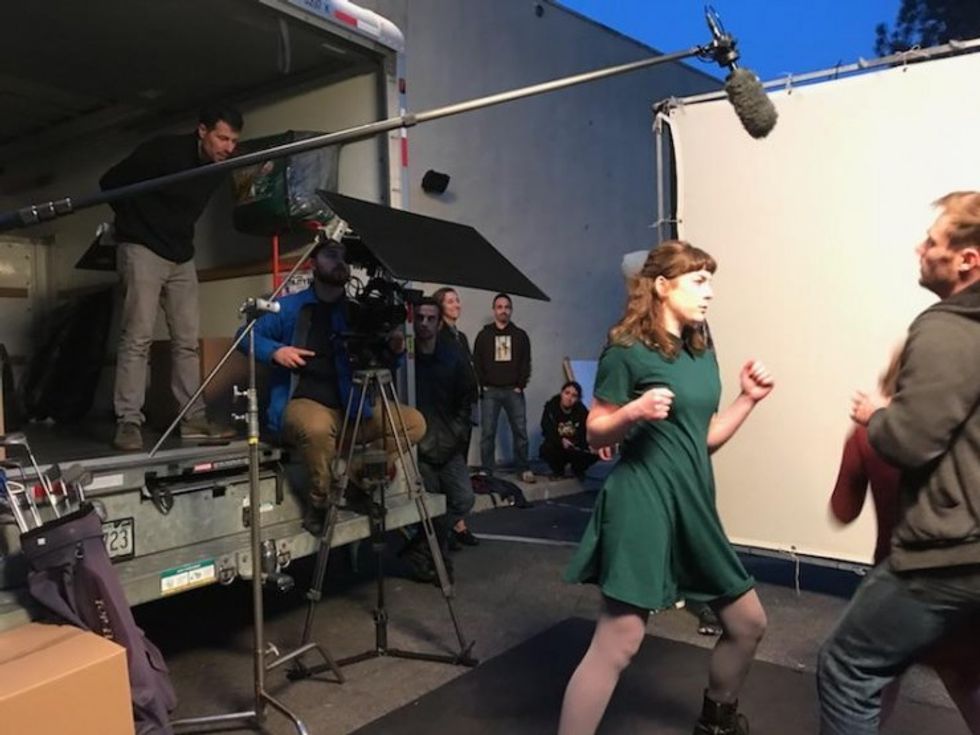
7. Shotlisting takes prep time but saves production time
As a cinematographer, shot listing with a director is one of my favorite parts of filmmaking. It is creativity without the time pressures of set. A good shot list gives a solid plan that can always be deviated from on the day.
“If you are still trying to figure out what your shots are once you're on set, it's very hard to pay attention to other voices,” Downie says. “But if you do the prep, and know your plan backward and forward, it's easier to listen to and evaluate suggestions from your cast and crew.”
If you have a solid understanding of your story and your coverage, you’ll feel more confident trusting your instincts when faced with decisions under pressure.
"Having my coverage visible in the script allows me to see at a glance where I will be able to manipulate the timing of the scene in the edit."
8. Line your script
“One thing I always do when I'm directing,” Downie says, “is to take my shot list, and line my script before the shoot. If you aren't familiar with it, this is that thing that script supervisors do during the shoot, where they draw lines down the side of the script to indicate where each shot begins and ends. I'm surprised how few other directors I've seen do this. Having my coverage visible in the script allows me to see at a glance where I will be able to manipulate the timing of the scene in the edit, and where I have to get it perfect in-camera. It also helps you extend shots or make cuts on set, when driven by the realities of time and location.”
9. The power of an AD
Assistant Directors are sometimes considered a luxury on an indie indie film; they shouldn’t be. A strong AD is one of those positions you sometimes don’t miss until they aren’t there, and you realize no one but you is driving your train.
“Masterpiece is an eight-page script shot in one very ambitious day,” Martinez refelcts. “[Our AD] Paul evaluated the setups and helped streamline the shot list for maximum efficiency. He challenged me to draft a cut list in case we were running behind. Efficient communication is crucial on-set and an AD helps to keep the wheels turning.”
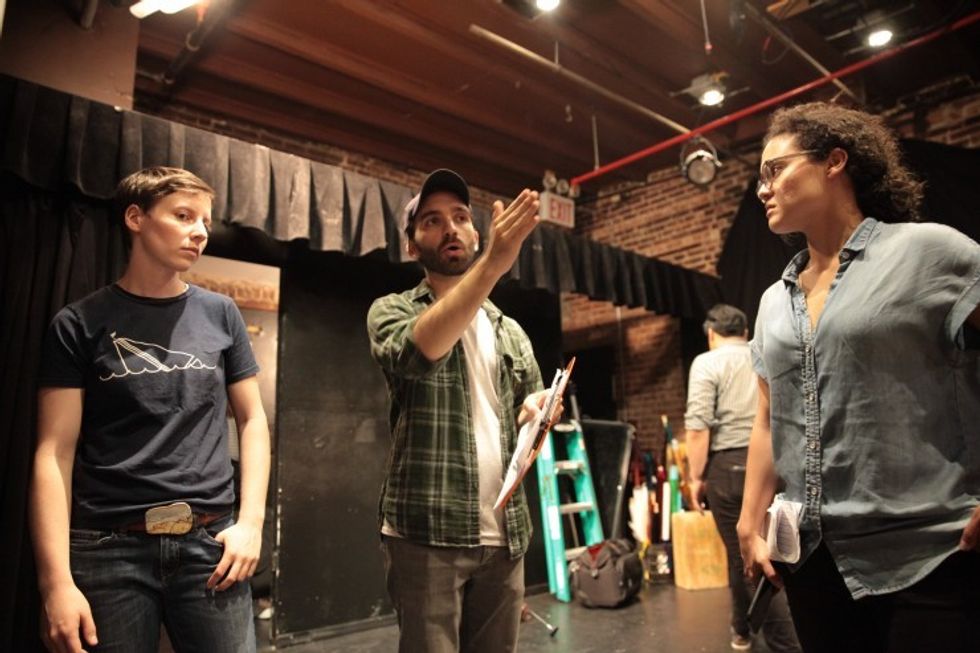
10. Give yourself enough time to edit
Not surprisingly, another tip from production-less Granger is to always give yourself time to edit. While this round he knew his project would be edit-heavy, he recalls a previous year where editing got pushed, and then surprises popped up that took a lot more time than was anticipated—needing to rotoscope?—and the project pushed the edge of the deadline. “Relatedly, try and put some time in your post schedule to screen the film to other people,” he says. “Even sending a link of the rough out to a few key folks to weigh in can be super helpful.”
In the case of director Kris Cheppaikode's personal documentary short, Unfinished Business, given the tight time frame he knew he had to mobilize an editor while he continued to play with the story, waiting for the real story to reveal itself. "Films should be like caves," Cheppaikode muses. "If you can see the entire thing from the outside, why go in?... I wasn’t surprised when good friend and editor Mike McCabe burst into my offices and shouted 'You’re crazy! How can I edit if you’re still writing?! And when do we start?!'" Find your tribe!
Putting it all together
Most of the movie-making I’ve experienced over the past thirteen years (as a cinematographer with a side of operator/director/default producer/camera assistant/gaffer) has been accomplished on a tight timeframe. We could always use more time to prep, to light, to rehearse, to color correct, to delve into directorial nuance. Most of the tips above essentially boil down to time management. You want to make a strong short? Funnel your limited time to where it matters most, whatever that means to you—which may mean keeping things simple. There is no absolute right way to make a film, just the right way for you and your project.
The other big take away from the above? Cultivate your collaborators. Find your tribe and work with them. As in life, so in film: set a positive tone and look for a community in which you can find—and give!—support.
For further information on Filmshop, visit: https://www.thefilmshop.org.
